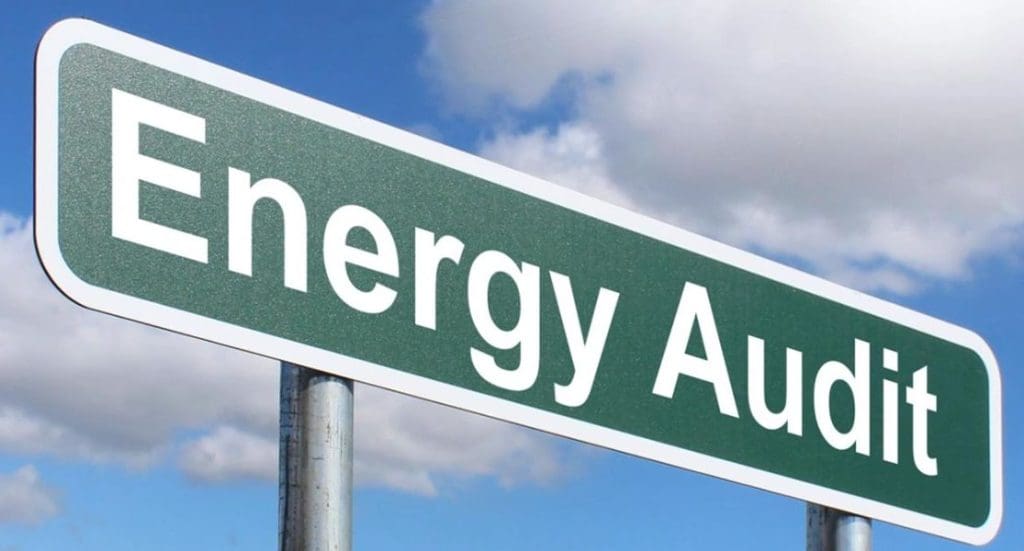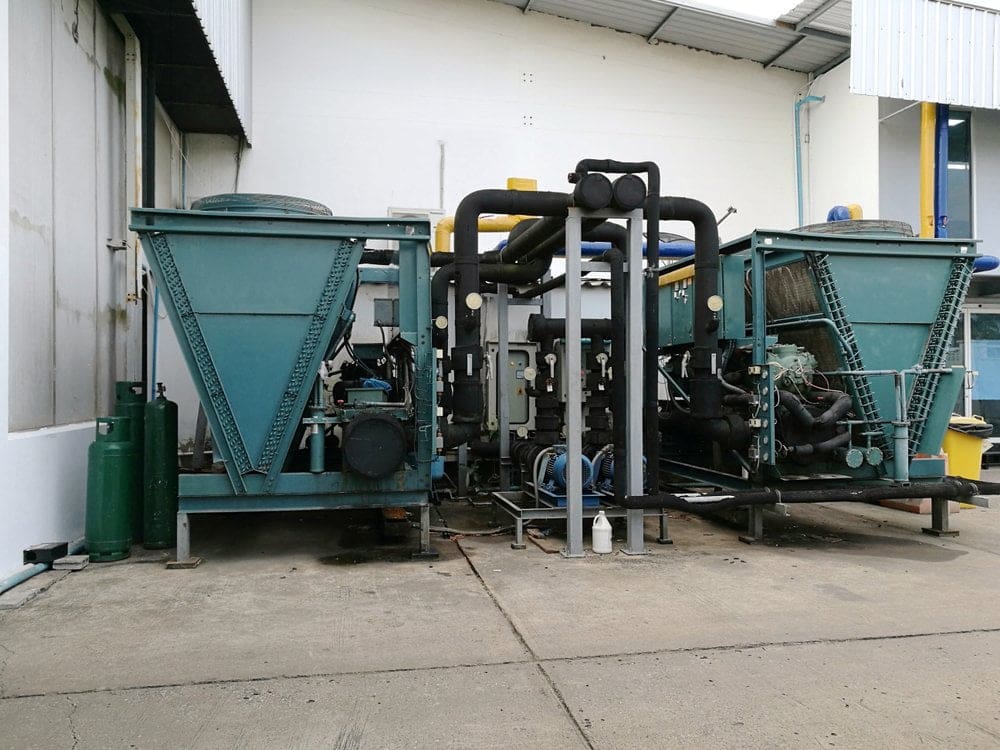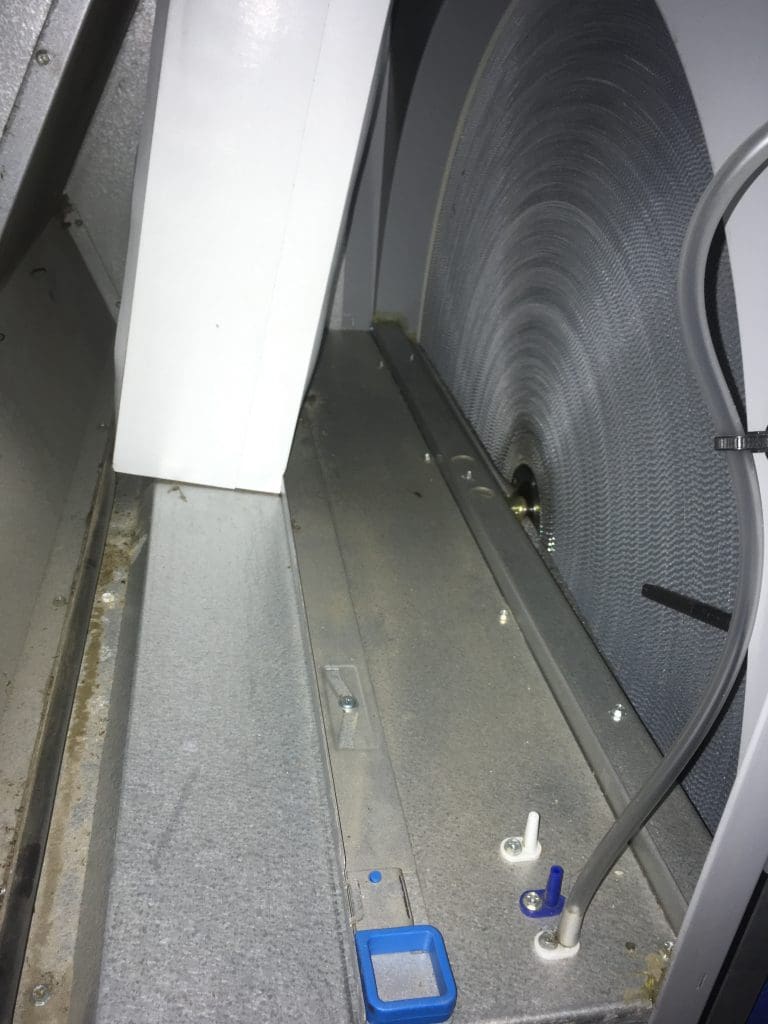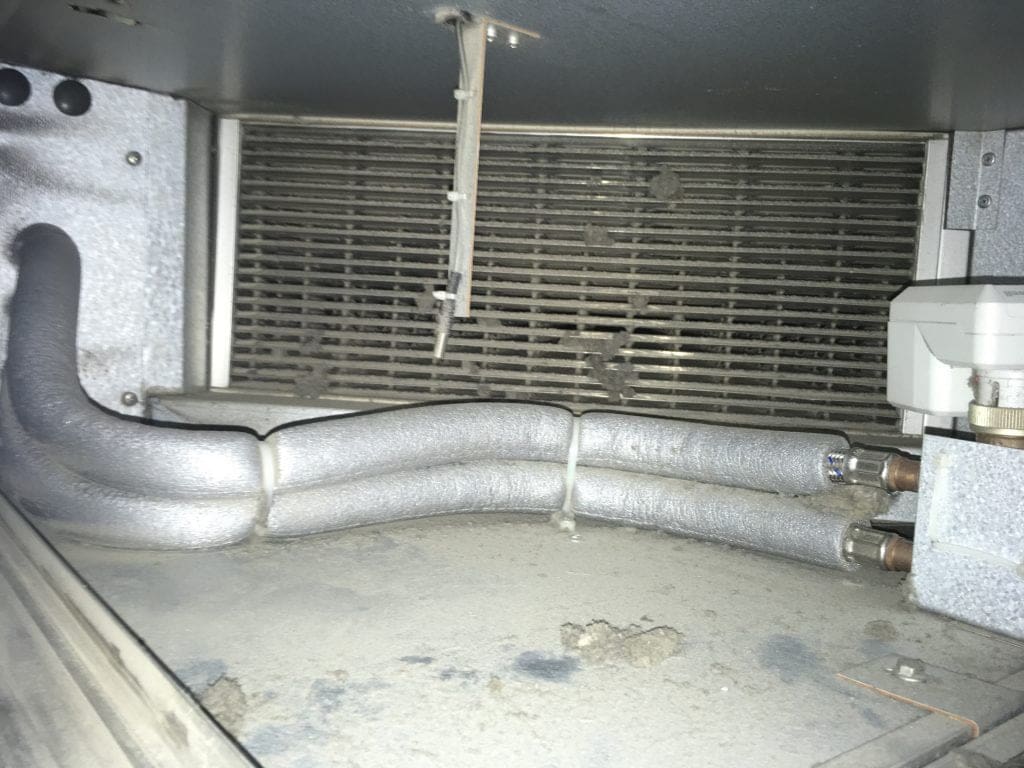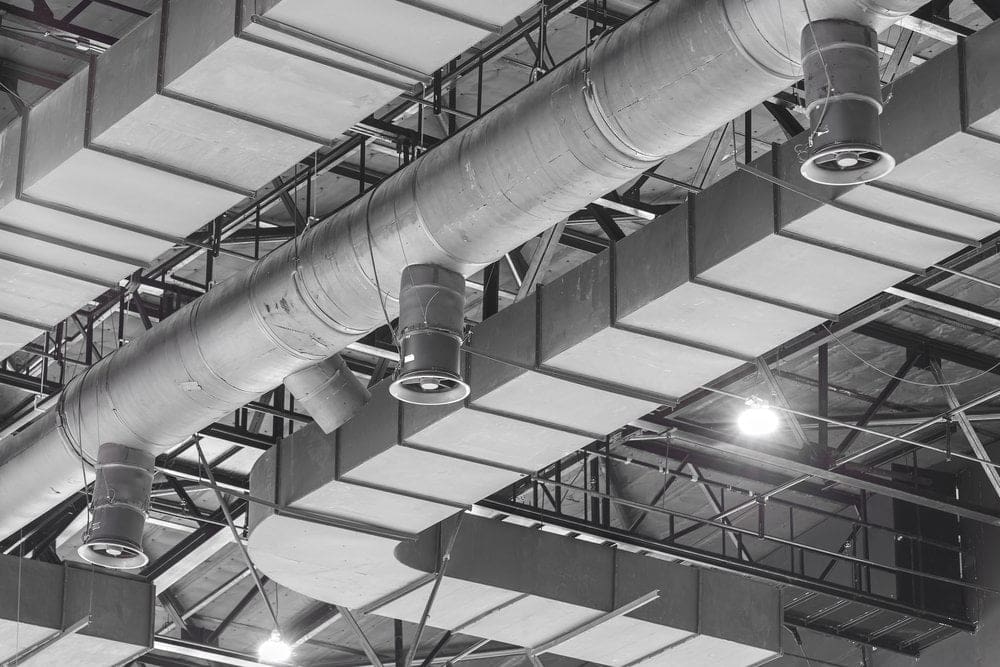TM44 INSPECTION SERVICES
TM44 INSPECTION BACKGROUND
Customised Consulting are accredited to provide TM44 inspection services ((also known as Air Conditioning Energy Assessments (ACEA)) for both simple (level 3) and complex (level 4) systems for buildings and can provide competitive quotes in Weybridge, Surrey, Sussex, London and Kent.
Since the 4th January 2011 The Energy Performance of Buildings Directive (EPBD) requires buildings with an effective rated comfort cooling capacity of more than 12 kW to have regular TM44 Air Conditioning inspections completed by an accredited TM44 inspector.
The effective rated output of more than 12kW is defined as buildings that include Air Conditioning systems consisting of individual units which are less than 12kW but whose combined effective rated output is more than 12kW, or single systems rated above 12KW.
Building owners or managers are responsible for ensuring these regular TM44 inspections take place on their buildings Air Conditioning systems throughout the UK, with separate legislation introduced in England and Wales, Scotland and Northern Ireland. Fines for Non-Compliance are £300,
The TM44 inspection frequency is set by the accredited TM44 inspector. However, in England, Wales and Northern Ireland the next inspection must be carried out within five years.
Types Of TM44 Inspection
The two types of Air Conditioning TM44 inspections are:
Simple Level 3 Inspections
These generally exclude centralised cooling systems such as chillers supplying a chilled water flow/return system and/or mechanical ventilation systems.
Typical systems include variable refrigerant flow (VRF) systems that are not used in conjunction with centralised mechanical ventilation systems, unitary packaged units, split packaged units and multi-split packaged units.
Complex Level 4 Inspections
In addition to items covered by simple level 3 inspections these generally include centralised Air Conditioning systems located within basement, rooftop or other plant room locations. They may contain a combination of equipment such evaporative cooling towers, dry air coolers, air cooled chillers, water cooled chillers that produce chilled water distributed to a range of fan coil units or air handling units throughout the building. Centralised Building Management Systems (BMS) controls systems may also exist to help manage the systems sequencing and maximise energy efficiency.
TM44 INSPECTION PROCESS
The TM44 inspection process required under the EPBD will examine the refrigeration equipment and air movement systems that are part of Air Conditioning systems, including their controls. It will also examine any documentation that helps understand the systems, or indicates the extent to which the systems have been maintained. We are also required to estimate whether the system is suitably sized for the cooling loads in the treated spaces, and to provide advice on ways in which improvement might be made to the energy efficiency of the system.
Access is required to equipment that may be located in plant rooms, outside the building including on rooftops or in other positions with limited provision for access. In all cases prior to works starting we agree the means for safe access with clients, following a health and safety risk assessment of the individual situation. Depending on site specific requirements and the complexity of the system we may need to be accompanied by the responsible building manager or maintenance agent at all times during the TM44 inspection.
Some additional access is likely to be needed, for example to the inside of AHUs or ducts, which must be provided and supervised by the responsible building manager or maintenance agent with due regard to the safety of our TM44 inspector and to the building occupants.
As this would require the system to be turned off to allow safe access, arrangements may need to be made for this outside normal working hours to avoid disruption to business.
Similarly, the TM44 inspector may need to access a sample of components, such as fan coil units, which may be hidden above suspended ceilings where access should again be provided by the responsible building manager.
TM44 INSPECTION REPORT
The purpose of the TM44 inspection report (also known as a TM44 inspection certificate) is to ensure that the building owner or manager is provided with information regarding the efficiency of the Air Conditioning systems that they control. This includes advice on how to improve the energy efficiency of the system, to identify opportunities to save energy and to reduce operating costs.
The TM44 report will include at least the following details:
- the likely efficiency of the system and any suggestions made for improvement
- any faults identified during the inspection and suggested actions
- the adequacy of equipment maintenance and any suggestions for improvement
- the adequacy of the installed controls and control settings and any suggestions made for improvement.
- the current size of the installed system in relation to the cooling load any suggestions for improvement.
- summary of the findings and the key recommendations
While there are no legal requirement to act on the recommendations within the TM44 report, acting on the advice and key recommendations and rectifying faults or making appropriate improvements, where this is attractive and cost effective, will contribute to the efficient running of Air Conditioning system, which will contribute to a reduction in carbon emissions and reduce the operating costs for the building occupants.
In some cases the costs of providing both heating and cooling may be reduced, in cases where these two systems are unnecessarily in use at the same time due to inappropriate controls or settings.
In many cases it will be clear that the building and systems are already well understood, documented and commissioned, with records available showing that the equipment has been regularly maintained to a good standard.
In such cases, the scope of a TM44 Air Conditioning inspection could be reduced in extent of the TM44 inspection report brief, with the main content advising on opportunities for load reduction or on alternative solutions not previously considered. In other cases it may be necessary to suggest relatively basic maintenance, such as cleaning or repairs, to equipment whose efficiency has evidently suffered through neglect.
Cleaning operations or adjustments to controls do not form part of the TM44 cost procedure, even where they might be carried out simply and with significant immediate effect to improve efficiency.
The TM44 inspection cost is not intended, or expected, to involve any physical work of this nature as this could change the level of professional risk to the energy assessor. Authority to carry out such work would need to be given as part of a separate arrangement by the building owner or manager provided the TM44 inspector has the necessary competence to do this work. However, the building owner, manager or their representative may well be able to carry out some alterations themselves as the TM44 inspection is carried out, provided they agree with the assessor’s observations.
TM44 INSPECTION SCOPE
Refrigeration
Refrigeration equipment and its associated heat exchange systems are checked only briefly during the HVAC TM44 inspection of Air Conditioning systems. The TM44 Air Conditioning inspection looks primarily for indicators of damage or lack of maintenance that would significantly reduce efficiency from the ‘as new’ state, and does not provide a high level of detail.
Air movement systems
Where installed as part of the system to provide cooling, air movement systems are an important aspect of the TM44 Air Conditioning inspection. The contribution that fans make to the total annual energy consumption of the combined cooling system is likely to be higher than that of the refrigeration plant itself, and there may be a greater potential for improvement.
Controls
Air Conditioning system controls are inspected in more detail. There could be considerable scope to identify inefficiency due to inappropriate control methods, incorrect control settings and poorly located sensors, and there could be much potential for improvement at low cost. Although discovered ‘faults’ may only be time switches or cooling or heating sensors being incorrectly set, the TM44 inspector would not have any authority to reset them but only to report to the manager.
Documentation
A number of the issues to be assessed as part of the procedure may be found by examining documentation describing the installed Air Conditioning systems and their commissioning results. As an example, the specific fan power (SFP) of air supply and exhaust systems may be calculated from details of the installed plant and commissioning flowrates, for comparison with current guidance.
Maintenance
Evidence is sought of any existing planned maintenance schedules, or of other recent maintenance activities. Where documentation clearly shows that AC equipment and systems are already the subject of regular good practice checking and maintenance procedures, a number of aspects of the required TM44 inspection and provision of advice may be omitted.
Advice On Improvement Options
Three levels of practice are likely to be encountered when Air Conditioning systems are inspected:
- systems where efficiency is clearly impaired due to faults, neglect or misuse
- systems where efficiency is likely to be lower than currently ‘accepted’ due to aspects of design or use
- systems that are acceptably efficient.
Given the need for simplicity and consistency, the TM44 inspection will mostly provide a combination of aspects of 1) and 2) only. However, best practice aspects may be provided on a generalised basis by providing reference to other published guidance sources.
A further category of advice which may also be given concerns some systems which may be older and operate with refrigerants which are being phased out, or having their use and supply restricted, under regulations relating to ozone depleting substances. In these cases the TM44 inspector may give advice on possible options for future system adaptation to use other refrigerants, or complete replacement. This advice will need to be supplemented by a more detailed assessment when modifications or replacement are to be undertaken.
TM44 PRE-INSPECTION INFORMATION
The following is the recommended information required prior to attending site to complete a TM44 inspection:
Level 3 Simple TM44 Air Conditioning Inspections
Essential Information
- Itemised list of installed packaged cooling systems including at least name of manufacturer, model, age, refrigerant, cooling capacity and location of equipment.
- Description of method of compressor capacity control.
- Description of method of control of periods of operation.
Desirable Information
- Reports from earlier inspections of Air Conditioning systems, and for the generation of an energy performance certificate or display energy certificate.
- Records of maintenance operations carried out including filter changing, cleaning indoor and outdoor coils, refrigerant leakage tests, repairs to refrigeration components or replenishing with refrigerant.
- Records of calibration and maintenance operations carried out on control systems and sensors.
- Records of sub-metered air conditioning plant use.
- Records of any issues or complaints that have been raised concerning the indoor comfort conditions achieved in the treated spaces.
- An estimate of the design cooling load for each system (if available). Otherwise, a brief description of the occupation of the cooled spaces, and of power consuming equipment normally used in those spaces.
Level 4 Complex TM44 Air Conditioning Inspections
Essential Information
- Itemised list of installed air conditioning and refrigeration plant including product makes, models and identification numbers, together with cooling capacities, with locations of the indoor and outdoor components of each plant. Include refrigerant and age.
- Description of system control zones, with schematic drawings or sketches.
- Description of method of condenser capacity control of temperature.
- Description of method of control of periods of operation.
- Floor plans and schematics of air conditioning systems or sketches.
Desirable Information
- Reports from earlier inspections of air conditioning systems, and for the generation of an energy performance certificate.
- Records of maintenance operations carried out on refrigeration systems, including cleaning indoor and outdoor heat exchangers, refrigerant leakage tests, repairs to refrigeration components or addition or removal of refrigerant.
- Records of maintenance operations carried out on air delivery systems, including filter cleaning and changing, and cleaning of heat exchangers.
- Records of calibration and maintenance operations carried out on control systems and sensors, or BMS systems and sensors.
- Records of sub-metered air conditioning plant use or energy consumption.
- For relevant air supply and extract systems, commissioning results of measured absorbed power at normal air delivery and extract rates, and commissioning results for normal delivered delivery and extract airflow rates (or independently calculated specific fan power for the systems).
- An estimate of the design cooling load for each system (if available). Otherwise, a brief description of the occupation of the cooled spaces, and of power consuming equipment normally used in those spaces.
- Records of any issues or complaints that have been raised concerning the indoor comfort conditions achieved in the treated spaces.
- Where a BMS is used the manager should arrange for a short statement to be provided describing its capabilities, the plant it is connected to control, the set points for the control of temperature, the frequency with which it is maintained, and the date of the last inspection and maintenance.
- Where a monitoring station, or remote monitoring facility, is used to continually observe the performance of equipment such as chillers, the manager should arrange for a statement to be provided describing the parameters monitored, and a statement reviewing the operating efficiency of the equipment.


